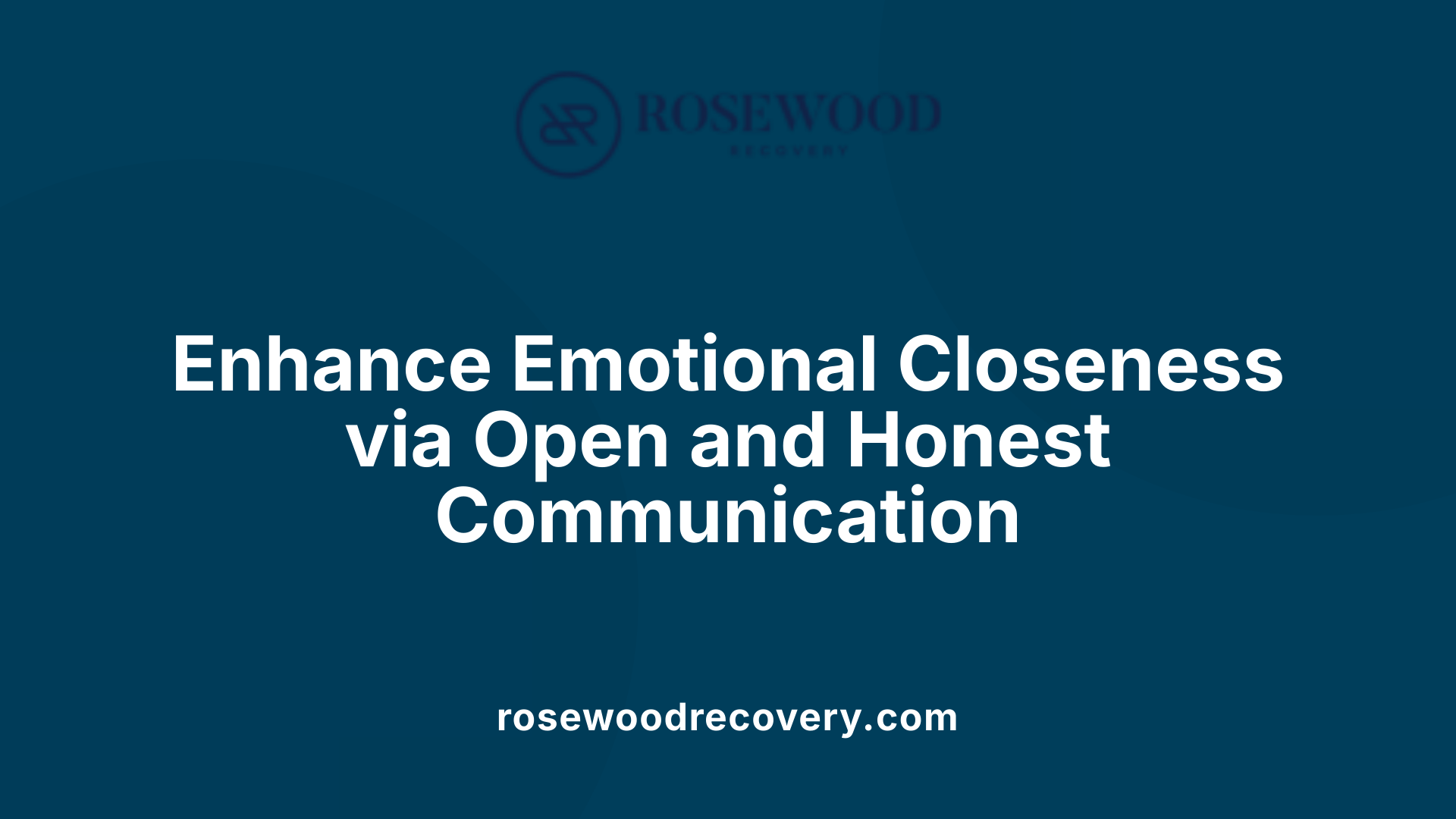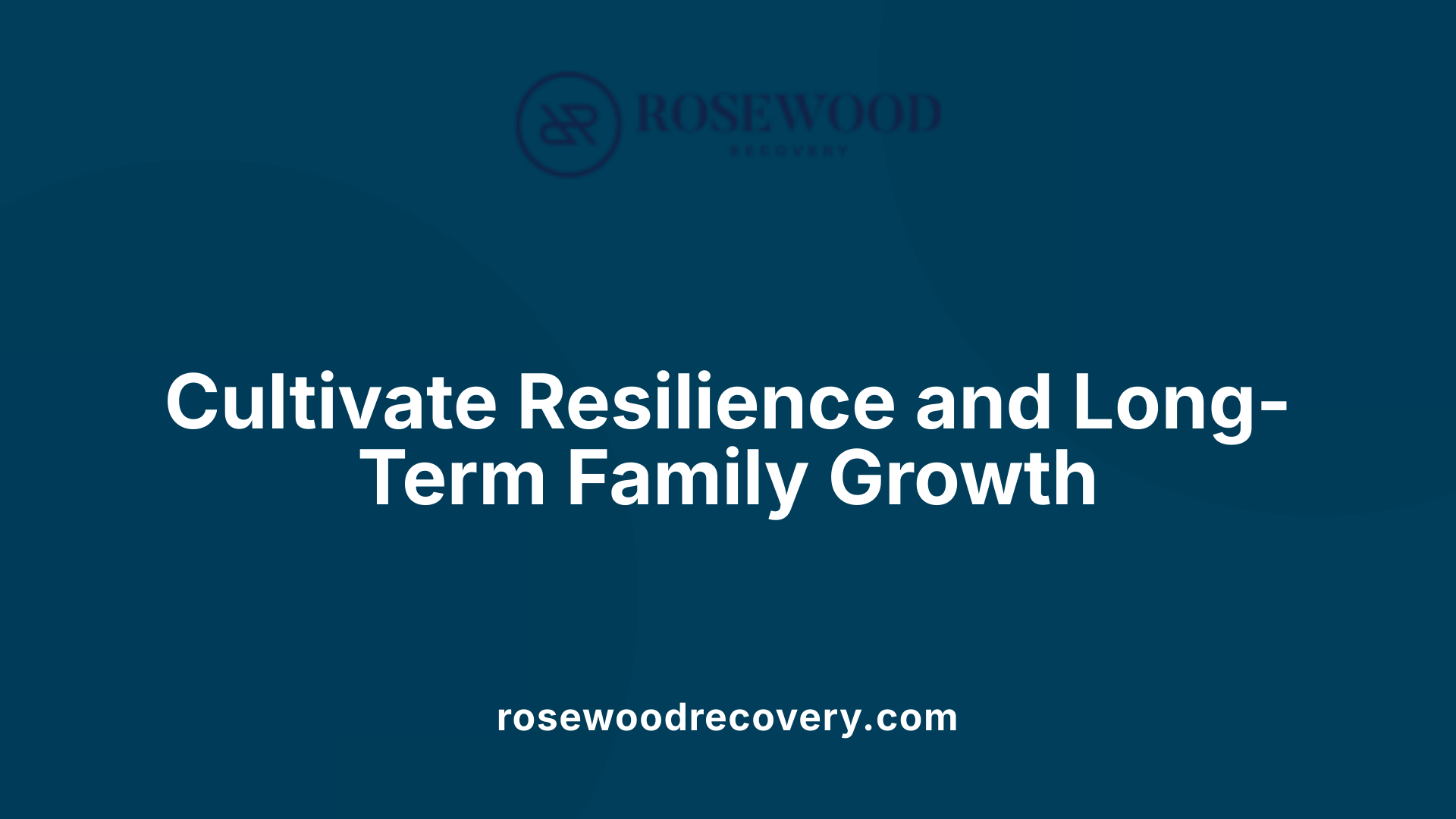How to re-establish emotional connection with family
Reviving Family Bonds: Practical Ways to Reconnect and Heal

Understanding the Significance of Emotional Connection in Families
Building and maintaining strong emotional bonds within families is essential for fostering mutual trust, support, and a sense of belonging. Emotional connection shapes family dynamics and profoundly impacts individual well-being and mental health. When families experience disconnection, whether due to misunderstandings, conflicts, or neglect, it can manifest as loneliness, numbness, or indifference. Recognizing these signs is the first step toward renewal. This article explores effective strategies and practical activities designed to rebuild and strengthen emotional ties, creating a supportive, nurturing family environment.
Establishing Shared Routines and Rituals
Creating shared family routines and rituals is essential for fostering emotional bonds and building a sense of identity within the family. Simple routines such as regular bedtime schedules, meal times, or family movie nights serve as stable touchpoints where family members can connect.
For example, going to bed at the same time as family members not only encourages healthy sleep habits but also reduces conflicts, promoting a peaceful household environment. Shared meal times provide opportunities for open conversations, strengthening communication and mutual understanding.
Family traditions, like weekend movie nights or annual vacations, help cultivate a collective identity and create lasting memories. These rituals offer opportunities for emotional processing, where family members can share feelings, reflect together, and support one another.
Developing these routines also lays the groundwork for emotional security. When routines are consistent, children learn to anticipate and trust the stability provided, which enhances their sense of safety and belonging. Additionally, engaging in activities like volunteering as a family or participating in community events helps promote empathy, prosocial behavior, and pride within the family unit.
Practical tips for maintaining healthy relationships include fostering honest and open communication, respecting individual boundaries, and making quality time a priority. Building routines that incorporate shared activities encourages a supportive environment where emotional well-being flourishes.
Overall, establishing and maintaining routines and rituals creates a foundation of trust, love, and mutual support that can weather challenges and enhance family resilience. These habits are vital for developing lifelong bonds and nurturing emotional health.
The Power of Family Activities and Shared Experiences
How do you fix a broken relationship with your family?
Repairing family relationships often requires patience and deliberate effort. Open, honest communication allows family members to express their feelings and concerns without judgment. Seeking professional help, such as family therapy, can provide a safe space for dialogue and healing. Practicing forgiveness helps release lingering resentment, fostering a more positive environment. Consistent effort in spending quality time and showing genuine support can gradually rebuild trust and emotional connections.
What are effective strategies to rebuild emotional bonds after conflicts or misunderstandings?
Engaging in respectful and empathetic communication is essential. Listening actively and validating each other's feelings help restore trust. Implementing forgiveness, both for oneself and others, aids in moving past conflicts. Sharing meaningful experiences, such as participating in family activities or simply enjoying quality moments together, strengthens the emotional bond. In some cases, professional guidance from counselors can facilitate understanding and reconciliation.
Family activities to strengthen emotional bonds
Incorporating shared activities into family routines can significantly enhance emotional connections. Reading together and engaging in discussions about books not only promote literacy but also foster mutual understanding.
| Activity | Description | Benefits |
|---|---|---|
| Reading and discussing | Family members read books together and talk about them | Develops comprehension, critical thinking, and dialogue |
| Volunteering as a family | Participating in community service projects | Promotes empathy, prosocial behavior, and a sense of community |
| Sharing meals without distractions | Eating together without devices | Strengthens communication and creates bonding time |
| Fun activities and outings | Playing games, visiting parks, or family trips | Builds shared memories, teamwork, and joy |
Spending time together through activities like game nights, outdoor outings, or community volunteering fosters a sense of unity and mutual support. These shared experiences provide opportunities to talk openly, appreciate each other's company, and create lasting bonds.
Creating regular rituals and routines, such as dedicated family nights or daily check-ins, also helps cement these emotional bonds. Whether it's a weekly movie night or volunteering together in the community, these activities contribute to a resilient and connected family environment.
Deepening Emotional Intimacy Through Communication

How do you fix a broken relationship with your family?
Restoring a damaged family relationship involves honest and open communication, forgiveness, and empathy. It's important to understand the underlying issues and make a shared effort to reconnect emotionally. Taking responsibility for past mistakes and showing genuine remorse can pave the way for rebuilding trust.
How can I improve emotional intimacy and communication among family members?
Enhancing emotional bonds requires active listening, where you pay full attention and provide feedback that shows you understand. Expressing love regularly, whether through words or actions, encourages openness. Creating opportunities for vulnerability, like sharing feelings or concerns, fosters deeper connections.
Techniques for Building Emotional Closeness
Building on these principles, effective methods include practicing active listening and expressing appreciation for each family member’s efforts. Sharing vulnerabilities—such as fears or aspirations—can deepen trust.
Establishing a safe space for open dialogue is essential. This involves choosing appropriate moments to talk, maintaining respectful language, and avoiding blame. Using non-verbal cues like eye contact and hugs can reinforce emotional support and presence.
Spending quality time together, such as family meals or relaxed conversations, encourages sharing feelings and stories. These practices build understanding and mutual respect.
Practical Tips
| Technique | Purpose | Details/Examples |
|---|---|---|
| Active Listening | Foster understanding and validation | Nods, verbal acknowledgments, paraphrasing |
| Expressing Appreciation | Reinforce positive bonds | Compliments, gratitude expressions |
| Creating Safe Spaces | Enable open, judgment-free conversations | Private settings, non-confrontational tone |
| Sharing Vulnerabilities | Build trust and intimacy | Discussing fears, hopes, or mistakes |
| Non-verbal Cues | Convey support and presence | Eye contact, hugs, gentle touch |
Fostering emotional intimacy is a gradual process that requires patience, consistency, and genuine effort. By focusing on honest communication, showing acceptance, and sharing openly, families can strengthen bonds that last a lifetime.
The Role of Empathy and Acceptance in Rebuilding Trust

What does lack of emotional connection feel like?
Lacking emotional connection in a family can manifest as feelings of loneliness, superficial interactions, and emotional numbness. Family members may sense a distance that creates frustration and a sense of disconnection, making it difficult to share true feelings or support each other effectively.
Can emotional connection be restored?
Yes, rebuilding emotional bonds is possible through dedicated effort. This process often involves honest conversations, showing vulnerability, sharing meaningful experiences, and, if necessary, seeking professional support like family therapy. Consistent efforts help restore understanding, trust, and intimacy.
Accepting family members as they are
One fundamental aspect of repairing emotional bonds is accepting family members without trying to change them. Acceptance fosters an environment where everyone feels safe to express themselves authentically and can build trust.
Letting go of expectations
Releasing rigid expectations about how family members should behave or feel can reduce disappointment and frustration. Embracing family members as they are allows relationships to develop naturally and more authentically.
Embracing differences and disagreements
Families are made up of individuals with unique perspectives and emotions. Learning to accept differences and approach disagreements with respect and openness strengthens emotional bonds. This includes listening actively and respecting diverse viewpoints.
Creating safe emotional environments
Healthy relationships thrive when emotional safety is prioritized. This involves practicing empathy, offering forgiveness, maintaining open communication, and reassuring family members that their feelings are valid. Such environments encourage vulnerability and healing.
Developing empathy and embracing acceptance are central to overcoming emotional barriers, fostering resilience, and building lifelong trust within families.
Using Rituals and Traditions to Reinforce Bonds

How can I improve emotional intimacy and communication among family members?
Regular rituals and traditions create opportunities for connection and foster a sense of continuity and shared identity. For example, family movie nights, shared meals, or weekly game sessions encourage open conversations and help family members feel valued and heard. These consistent activities build trust and understanding, deepening emotional bonds.
What are effective strategies to rebuild emotional bonds after conflicts or misunderstandings?
Starting new traditions and sharing positive experiences help move past conflicts and strengthen bonds. Activities like family vacations or celebrating special occasions together can create joyful memories that overshadow previous disagreements. These shared moments promote forgiveness and emotional reconciliation.
How do family rituals contribute to a sense of belonging?
Creating new traditions, celebrating holidays, and planning family vacations foster a sense of identity and belonging within the family. These routines provide stability and a special feeling of togetherness, making each member feel connected and appreciated.
What shared activities mark important moments for families?
Engaging in activities such as birthday parties, holiday celebrations, or camping trips mark memorable milestones. They serve as collective memories that reinforce family unity and provide emotional safety.
How do rituals foster family identity?
Rituals and routines act as symbols of family culture, helping members recognize their shared history and values. They create a unique family identity that is passed down and cherished, strengthening emotional connections.
| Ritual Type | Example Activities | Benefits | Typical Frequency |
|---|---|---|---|
| Family Celebrations | Birthdays, holidays | Foster belonging, create memories | Annually or seasonally |
| Shared Meals | Dinner times, picnics | Enhance communication, build trust | Daily or weekly |
| Special Traditions | Vacation routines, game nights | Reinforce family identity | Monthly or seasonal |
| Personal Rituals | Bedtime stories, one-on-one outings | Promote individual bonding | Regularly or as needed |
Building these traditions not only provides structure but also nurtures emotional health by creating lasting bonds, emphasizing shared values, and supporting a family’s unique identity.
Professional Support and External Resources
When familial bonds weaken or become strained, seeking external support can be a vital step toward healing. Family therapy and individual counseling are effective ways to address emotional disconnects, offering safe spaces for open dialogue and conflict resolution. Therapists trained in family dynamics can help uncover underlying issues and facilitate mutual understanding.
Family support groups also serve as valuable resources, connecting members with others facing similar challenges. These groups provide a sense of community, validation, and shared strategies for strengthening relationships.
To gauge progress, families can utilize quizzes and assessments that measure emotional connection levels. Tools like the Welch Emotional Connection Screen (WECS) offer validated evaluations to identify strengths and areas needing improvement.
Can emotional connection be restored? Yes, especially with the help of professionals such as therapists who can facilitate communication and conflict resolution.
How do you fix a broken relationship with your family? Professional help can provide neutral ground for healing, understanding, and rebuilding trust.
Exploring options like family therapy and counseling for emotional reconnection can be a pivotal step in healing and fostering lasting bonds.
Fostering Resilience and Long-Term Growth

How do you fix a broken relationship with your family?
Restoring family bonds takes time and dedication. It involves patience, consistent effort, and a willingness to communicate openly and understand each other's perspectives. Rebuilding trust may include forgiving past mistakes, making new positive memories, and establishing routines that foster connection.
What role does emotional connection play in family relationships?
Emotional bonds form the foundation of trust and security within families. They support resilience during tough times and promote long-term harmony. Strengthening emotional connections through shared experiences, open dialogue, and mutual support helps families navigate challenges and deepen their relationships.
Ongoing efforts, patience, and adaptability
Building resilience isn't a one-time task. It requires continuous effort, patience to overcome setbacks, and flexibility to adapt to changing circumstances. Practicing active listening, showing appreciation, and maintaining routines contribute to a resilient family environment.
Building resilience in children and adults
Resilience develops through positive interactions, emotional support, and teaching problem-solving skills. For children, consistent routines, loving discipline, and encouragement foster confidence. Adults benefit from self-awareness, stress management, and supportive communication. Together, these elements create a robust family fabric.
Long-term benefits of strong family bonds
Families with resilient, emotionally connected relationships tend to experience fewer conflicts, greater emotional stability, and higher overall well-being. These bonds promote a sense of belonging, foster growth, and help individuals better manage life's inevitable stresses.
Recognizing and appreciating progress over time
It’s vital to celebrate small wins and acknowledge growth along the way. Whether it’s improved communication, resolving misunderstandings, or simply shared laughter, recognizing these moments reinforces positive change and motivates ongoing effort toward a healthier family dynamic.
| Aspect | Focus Area | How It Supports Resilience |
|---|---|---|
| Communication | Open, honest dialogue | Builds understanding and trust |
| Routines | Consistent family rituals | Creates stability and security |
| Emotional support | Showing affection and empathy | Strengthens bonds and confidence |
| Flexibility | Adapting to change | Enhances coping skills |
| Recognition | Celebrating progress | Reinforces positive behaviors |
Maintaining effort, patience, and adaptability secures long-term growth. Strengthening family resilience helps all members, young and old, thrive through life's ups and downs, forging bonds that last a lifetime.
Nurturing Bonds for a Fulfilled Family Life
Re-establishing emotional connections within families is a journey that demands patience, intentionality, and genuine effort. By embracing routines, engaging in shared activities, practicing open and empathic communication, and seeking professional guidance when necessary, families can heal wounds, rebuild trust, and foster a nurturing environment. The fruits of these efforts include deeper intimacy, greater resilience, and a lasting sense of closeness that supports all members through life's challenges. Every step taken towards emotional reconnection enhances the well-being and happiness of the entire family unit.
References
- 4 Simple Ways to Nurture Closeness in Your Family
- Emotional Connection - Nurture Science Program
- 9 ways to reconnect with family - Tony Robbins
- 8 Ways to Strengthen a Parent-Child Relationship | Family Services
- 5 Ways to Re-Connect with Family
- Developing Emotional Intimacy - Focus on the Family
- Why Don't I Feel a Connection to My Family? - Psych Central
- The Power Of Family Bondings: Strengthening Your Mental Health ...
- 15 Effective Tips for Repairing Emotional Intimacy - Marriage.com
- How to build emotional connection in relationships — Calm Blog
More Articles
Recovery Begins Here
Click below to get in touch and schedule a consult call with our team to begin your journey towards happiness and freedom.
Rosewood Recovery does not discrimate against any person because of the race, color, religious creed, ancestry, age, sex, sexual orientation, gender identity, national origin, handicap or disability or the use of a guide or support animal because of the blindness, deafness or physical handicap.





